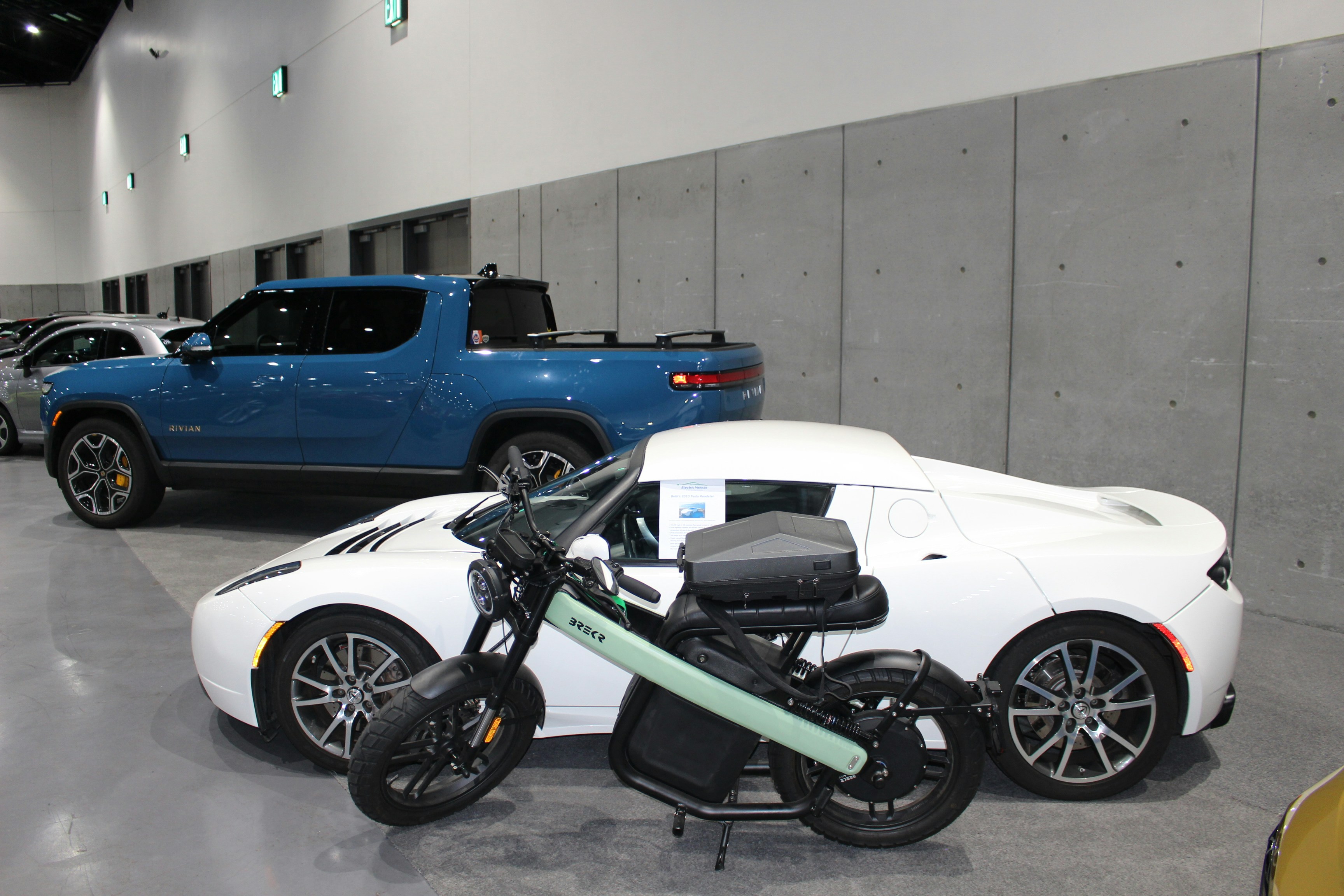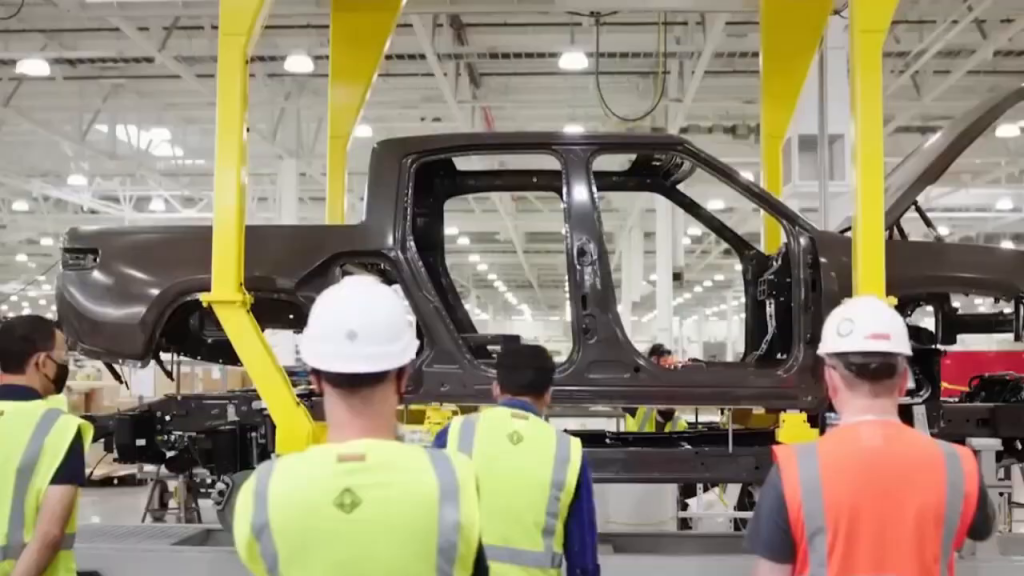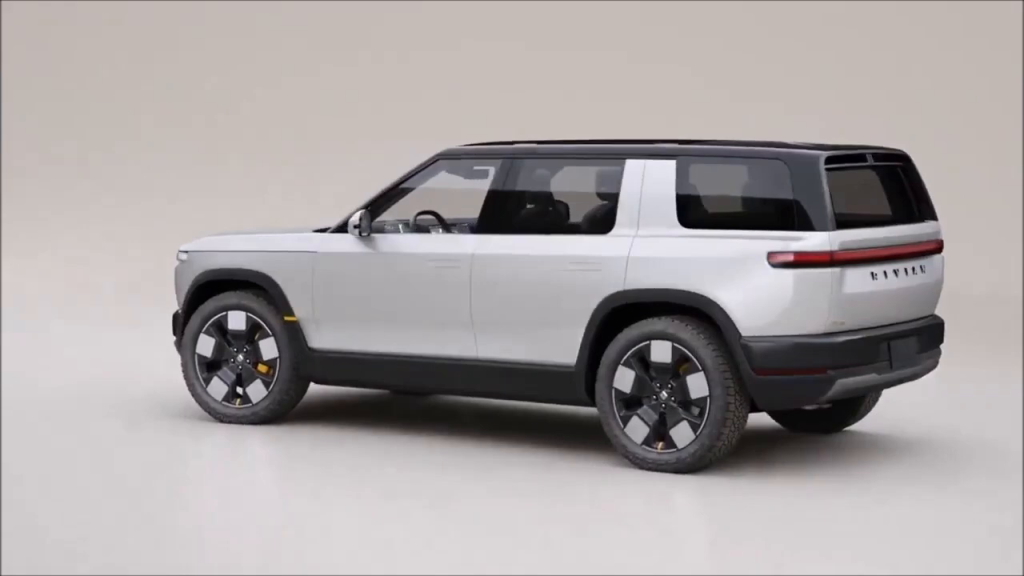The auto industry is undergoing a massive transformation, and electric vehicles (EVs) are the focus of new innovation and investment dollars. Rivian has just introduced a new EV with remarkable new specs and features that must be examined. This article will take a closer look at the specifications and features of Rivian’s new vehicles. With a base Rivian price of just $45,000, this is primed to become the next leading-edge EV and will help spur the world transition to EVs.
Unmatched Performance and Value
In contrast, Rivian is building the Rivian SUV that will convince people of a new, genuine performance benchmark in terms of both affordability and ecological perspectives. Rivian takes the best of luxury, power, and eco-friendly possibilities and has combined them into one very attractive package. The SUV is capable of a 0-60 mph time in the three-second range, putting it in the company of top sports cars, and a driving range of over 300 miles will allow ordinary people to go on extended holiday trips without stopping at the charging stations every other block.

This is especially impressive considering that Rivian is selling the vehicle for just $45,000. At that Rivian price, the company is targeting the segment of consumers who purchase internal combustion engine (ICE) sport utility vehicles (SUVs) such as the Jeep Grand Cherokee and Toyota 4Runner, while also being several thousand dollars less than most competing electric vehicles such as the Tesla Model Y and Ford Mustang Mach-E. Pricing the Rivian SUV below ICE SUVs, but around the same price as the premium competition, is a masterful strategy that delivers a powerful message: Rivian vehicles aren’t just for premium buyers.
And that sets the Rivian R1T apart from most other EV SUVs. It’s built with so-called ‘Class-1 off-road capability.’ That means the Rivian R1T has adjustable air suspension, sturdy all-terrain tires, and reinforced underbody protection to handle bumpy trails, deep mud, and rocky creeks. Drivers will have no trouble leaving the pavement behind for some high-friction adventure. Rivian’s new all-electric adventure vehicle is made for exploration and is ready to go wherever you want – no matter what the adventure takes you. It can easily go from ripping across rugged backcountry trails to blending in with the urban commuter scene.
The R2 and R3 Models: Expanding Rivian’s Lineup
Following its initial successful models, the Rivian R1T and Rivian R1S pickup trucks and SUVs respectively, Rivian vehicles have launched the R2 and R3 model line, shifting from premium off-road vehicles to more plentiful, affordable crossover vehicles that lean into families, city customers, and conscientious consumers.
R2: The Midsize Offering
This is the R2, Rivian’s midsize flagship that is squarely targeting midsized crossovers such as BMW’s iX3 and Audi’s Q5. The Rivian R2 is more or less the same athletic, off-road-ready beast but in a more compact, urban-friendly guise. Its short front and rear overhangs optimize approach and departure angles, making it a good subcompact off-roader for those who want a smaller, more nimble vehicle.

There are two cargo areas – one in the front as a trunk, and a larger rear cargo hold. The interior is supremely flexible, and the back seats can lay entirely flat, maximizing the cargo area. A rear-wheel-drive single-motor version and a dual-motor all-wheel-drive model are both set to offer more than 300 miles of range, thanks to Rivian’s next-generation battery tech.
R3: A Compact Crossover
Coming in at around $50,000, Rivian automobiles are the priciest EVs in sight: which small electric crossover with a range of 300 miles or more can compete with a raised roofline and all-wheel drive (and a dash to 60 mph in around four seconds)?
Volvo, which made its name in stately wagons, has a new boxy primer to the EV crossover pile-on called the EX40, which is slowly rolling out across markets. The Hyundai Ioniq 5 and its second derivative, the Kia EV6, however, are the games Rivian vehicles really want. It just needs something smaller, more urban-minded, less railway-friendly, and still channeling Rivian’s brutal, outdoorsy DNA. No problem. As a purely EV company, Rivian’s ambition is to share a platform (read: components) across all its products. The R2 and R3 more or less use the same battery technology. They both boast the company’s ‘Level 3’ advanced driver-assistance systems (ADAS) autonomous driving tech.
Another of Rivian’s signature elements, the fold-flat seat in the R3, makes it incredibly versatile for both passengers and cargo. Rivian released a video showcasing their flexible seating designed to maximize space in the interior. This makes the model an ideal option for someone downsizing or seeking an entry into the SUV market, yet not interested in sacrificing capability or utility, as this model delivers.
To compete in two segments of the EV market with a single platform, Rivian also revealed the R3X, a rugged off-road version, with a longer wheelbase, beefed-up suspension, larger wheels, and more aggressive off-road tires.
International Expansion Plans
Nor is Rivian company content to sell only to North American customers. With EV demand soaring around the world, the company is building two more large plants abroad, one in Europe and one in China. (Many ‘expert’ analysts have projected that those two regions – along with another, India – will be the world’s largest electric vehicle markets in the coming decade.)
Overall global EV sales as a share of new cars sold more than doubled in 2023, with 24 percent of new vehicles sold in Europe being electric or hybrid, and with China’s EV market already the largest in the world.

Supporting its international growth, Rivian company looks to partner with local manufacturers and suppliers to build Rivian vehicles on the ground, bypassing import tariffs and distribution issues, and leveraging European charging infrastructure. Talks with ‘numerous European energy providers’ are underway to deploy localized charging networks optimized for Rivian automobiles.
But international expansion is not easy, with Rivian company facing established and often luxury automakers including Volkswagen, BMW, and Mercedes in Europe, who already have broad EV lineups. Meanwhile, Chinese automakers such as Nio and XPeng are expanding aggressively and already have strong competition within the marketplace where they’re known.
Rivian would have to offer a product with clear differentiation among the established market with their platform combination of performance, off-road capability, and advanced technology.
Latest Technological Advancements
Rivian has made some technical advancements in recent years. The vehicle’s battery range and performance capabilities – closely tracking Tesla’s – are impressive, but the company has also made a big bet on next-generation features, including autonomous driving. Its latest models are equipped with Rivian Driver+, an advanced driver-assistance system (ADAS) offering lane-keeping assist, adaptive cruise control, and hands-free highway driving – improvements that are updated continuously via over-the-air software updates, similar to Tesla’s ongoing improvements to its Autopilot system.
On top of this, Rivian recently announced that new models in its stable will include vehicle-to-grid (V2G) technology, allowing owners to draw power from their Rivian automobiles to run their homes or sell surplus electricity back to the grid. This is particularly useful while renewables generation, such as solar and wind, starts to dominate the energy market, telling us that Rivian will be part of a much bigger ‘green’ energy ecosystem.

The company is also exploring silicon-anode batteries, which can charge more quickly and offer longer ranges than regular lithium-ion batteries, setting Rivian automobiles further apart. Rivian plans to be a leader in EV innovation.
Conclusion: A New Era for Rivian
The R2 and R3 – the latest confirmed Rivian vehicles – were designed more for the mainstream. The company’s latest SUV has much lower price points and an all-electric range on par with other leading EVs. They’re not strictly designed to be used as Grand Tourers in the jungle or on the beach – Rivian cars aim to establish themselves as everyday EV brands.
The future will be in the hand of Rivian’s algorithms, millimetric tolerances, and South American plants. Starting from a very different base than Tesla, Ford, or GM, Rivian company created its prototype and is quickly becoming a serious competitor for the automotive giants.
Moving from an American startup to a global electric vehicle brand, Rivian puts a strong focus on technology, affordability, and globalization. The heavy investment in its fleet of EVs could easily lead Rivian cars to become one of the most competitive companies in the rapidly growing EV industry.
Key Takeaways
- Mind-Blowing Pricing: Rivian’s $45,000 SUV has more off-road, performance, and luxury features than electric SUVs by Tesla and Ford, at a much lower cost.
- Greater appeal: The debut of R2 and R3 is Rivian’s pivot towards more affordable and versatile electric crossovers, further expanding its customer base.
- Global scale: Goals to expand into Europe and China demonstrate intent to scale up, but it must overcome competition from local and global automakers.
- Primary Technology: Rivian has all the most advanced automotive technology for Battery, Autonomous Driving, and Vehicle-to-Grid-capable EVs.
- Sustainability and Innovation: Rivian’s pledge to carbon-neutral manufacturing and cutting-edge battery technology reaffirms its dedication to bringing battery-powered vehicles to the masses while maintaining their green and high-tech nature.
For more updates about EVs visit XmotoCars – YouTube.
/2026-rivian-r2-first-look-affordable-off-road-ev-suv